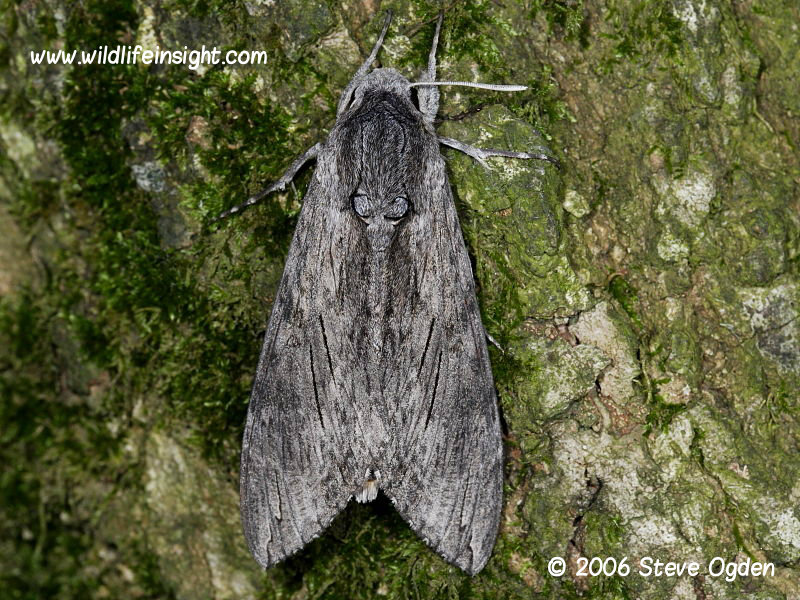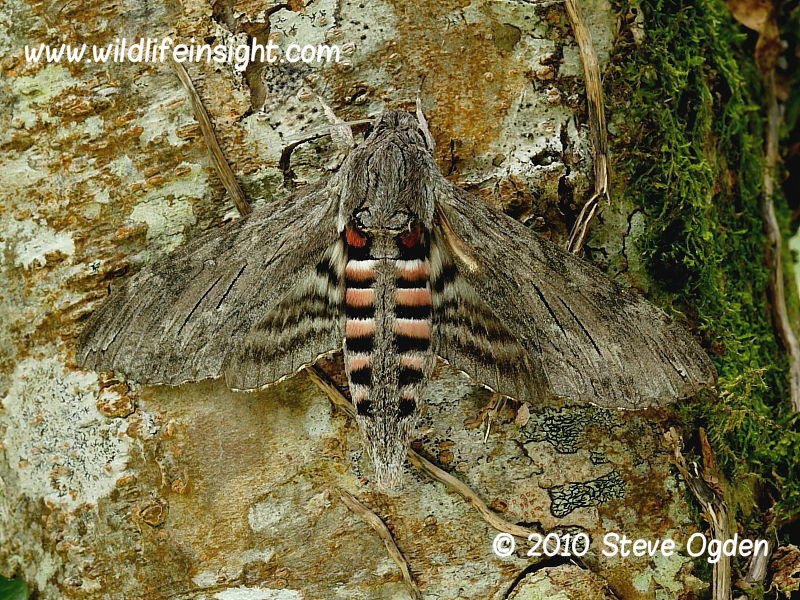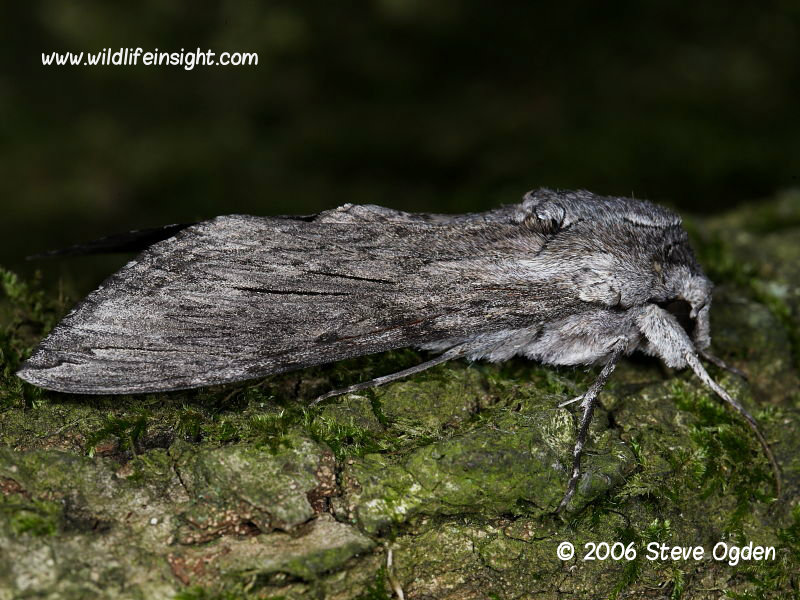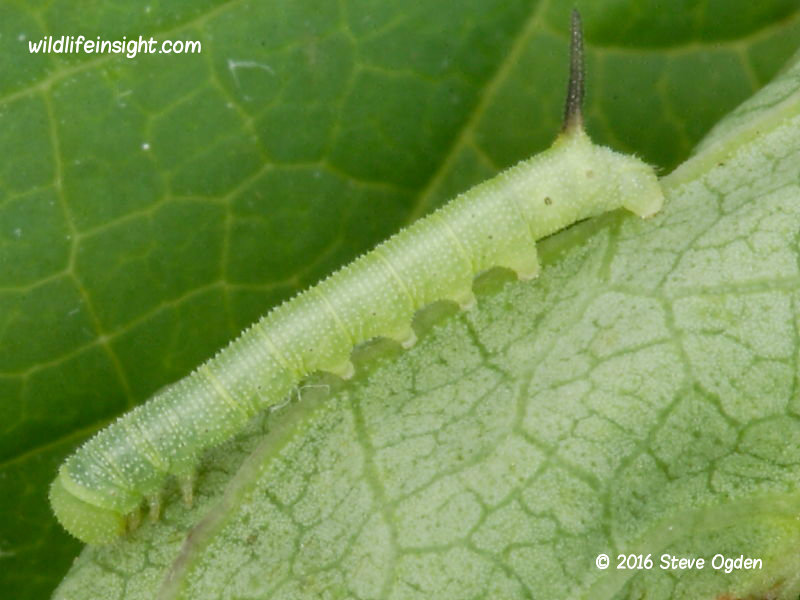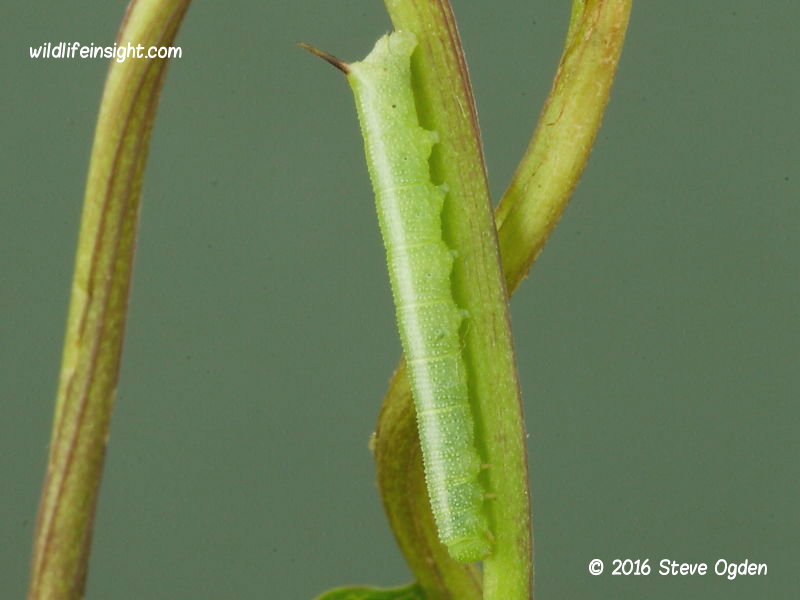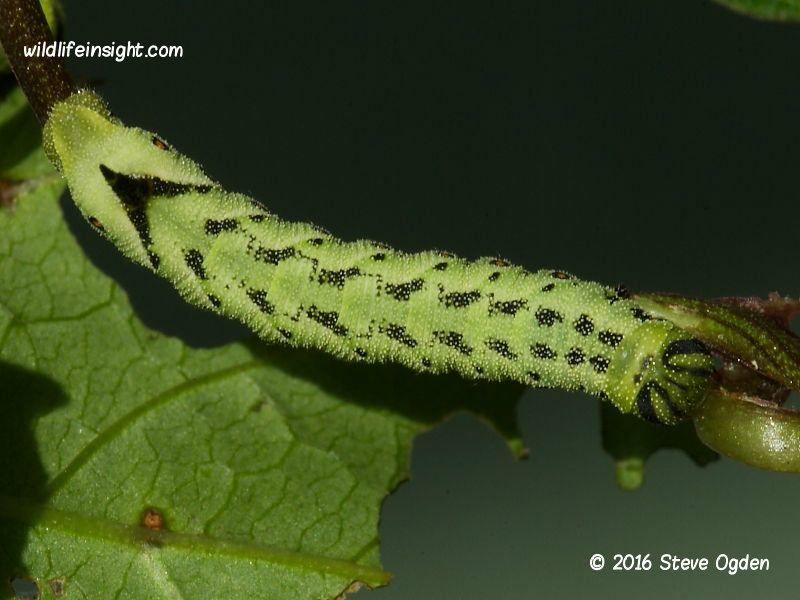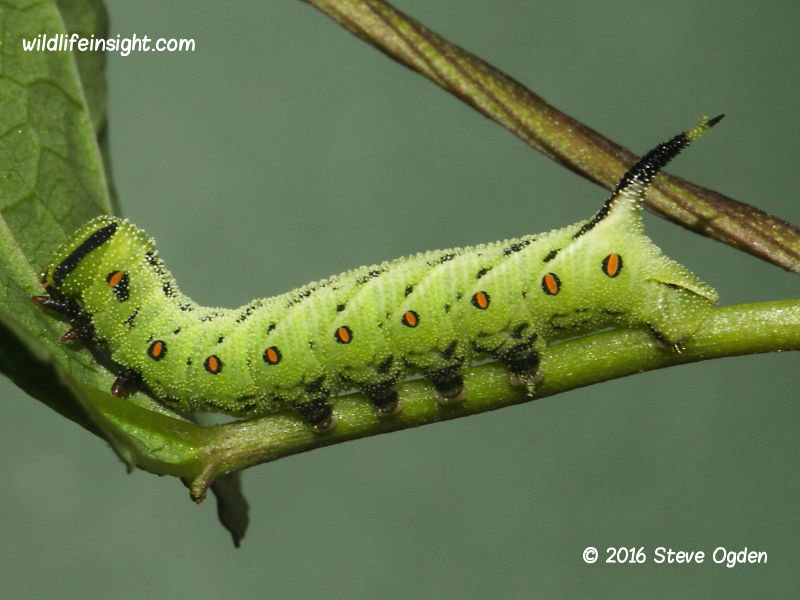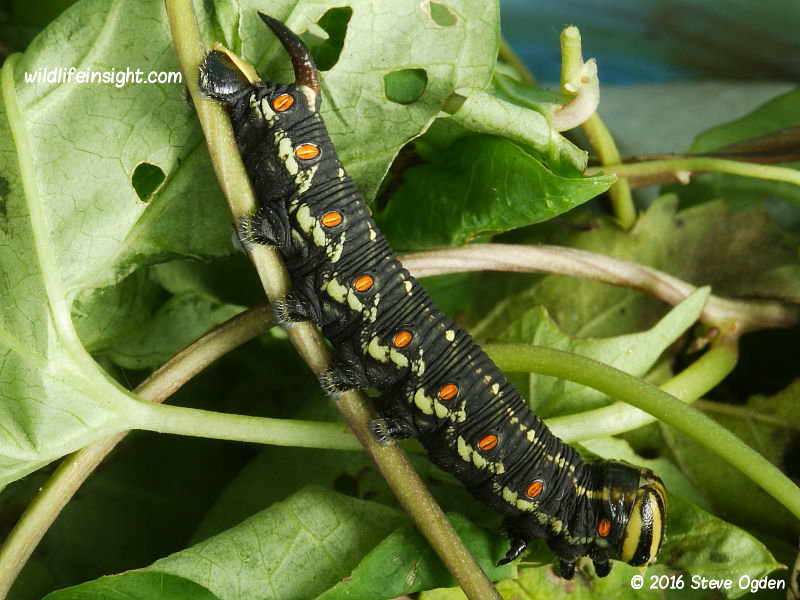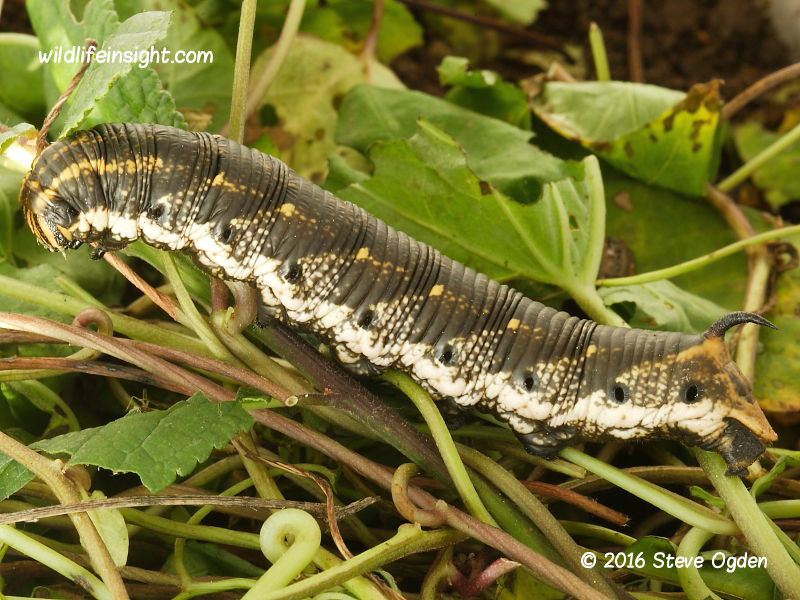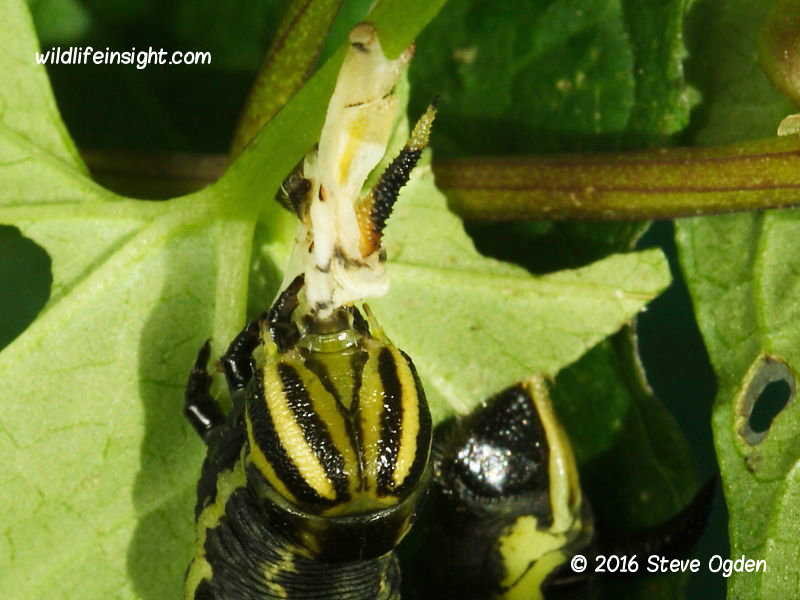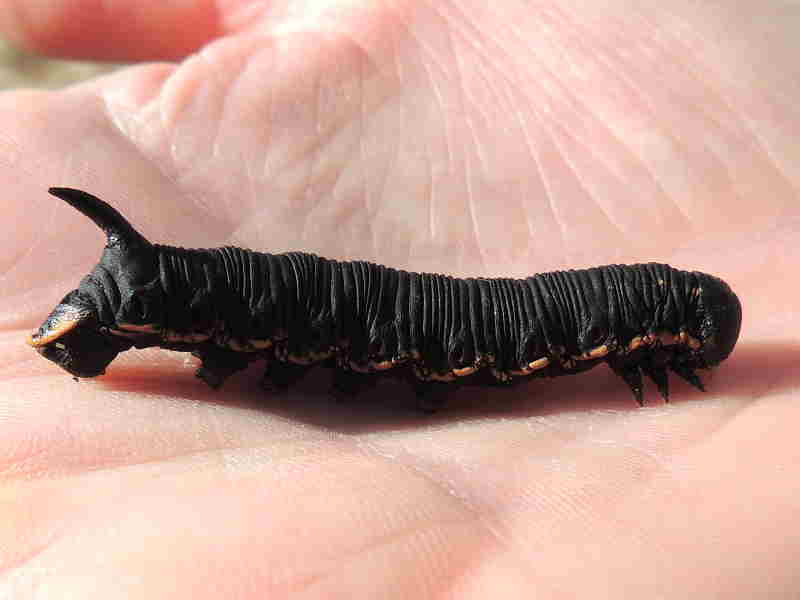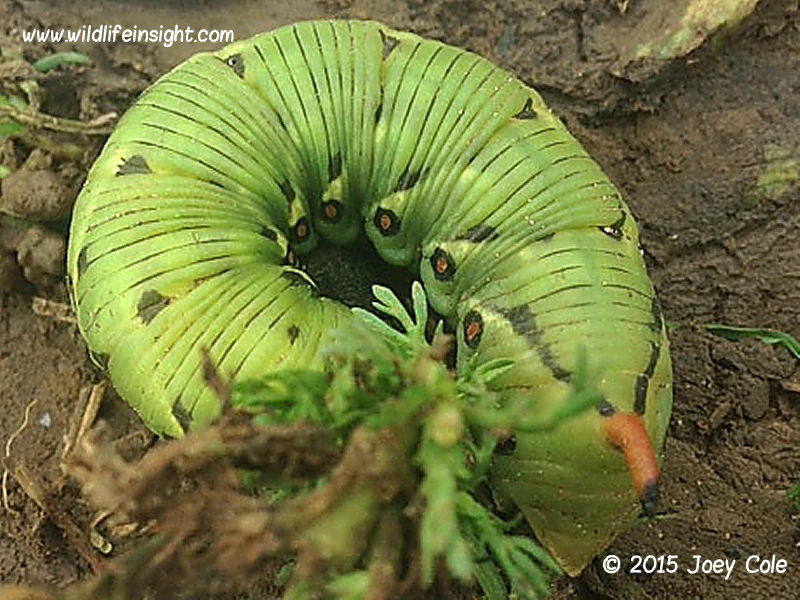Convolvulus Hawkmoth, Agrius convolvuli
The Convolvulus Hawkmoth is a large member of the Sphingidae family of Hawkmoths with a wing span of over 120mm.
It is a regular migrant to northern Europe from southern Europe and Africa.
Those migrants to the British Isles mostly occur in late summer or early Autumn.
The larval foodplant include species of bindweed and other members of the Convolvulaceae plant family.
Despite caterpillars being found in small numbers in southern England they are unable to survive the cold winters.
Sightings included are from southern Europe and the British Isles.
The adult Convolvulus Hawkmoths images shown are of migrant moths attracted to light in North and South Cornwall in the UK during 2006 and 2010.
The life cycle photographs are of a brood reared from eggs laid by a female attracted to light on the Lizard peninsular in Cornwall, England in early October 2016 by John Foster.
Convolvulus Hawkmoth, Agrius convolvuli, eggs
This is a brief summary of a brood of Convolvulus Hawkmoth reared from a batch of eggs laid by a female attracted to light on the Lizard peninsular in Cornwall in south west England. A county with the mildest winters in the British Isles.
Eggs were laid in small batches on field bindweed. Those eggs kept inside at a temperature of between 18-25c began hatching after 8 days.
Eggs from the same batch kept in cooler conditions hatched 3 days later.
The emerging 3.5mm long caterpillars fed on their egg sacks before dispersing onto the leaves of the bindweed.

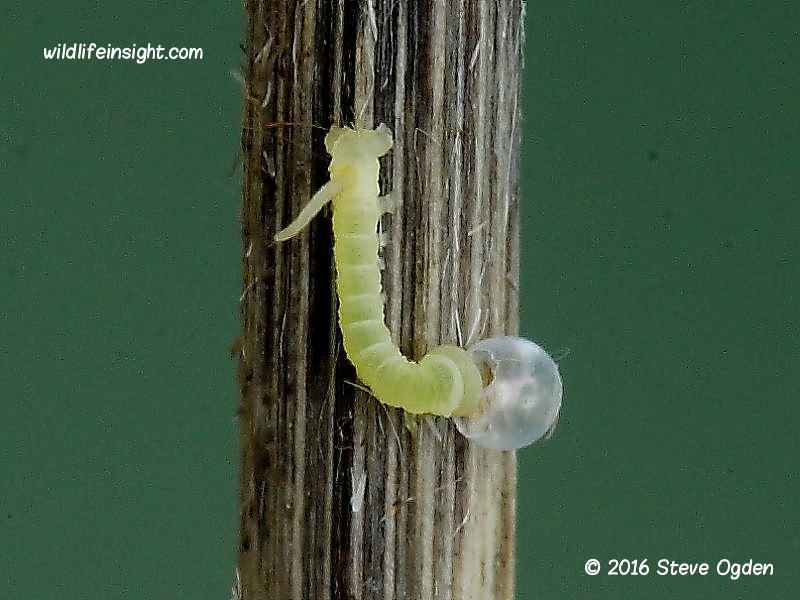
Convolvulus Hawkmoth caterpillars
The hatching caterpillars had prominent pale tail horns which turned black within a few hours. They were fed on common bindweed collected from the garden.
The first dark spiracles became evident on the lower segments after 7 days following a moult when 9mm in length.
After 24 days the largest had reached 35mm and were predominantly green with developing darker markings.
The most significant colour change occurred after a moult at 28 days, when 45mm long, becoming much darker. At this stage all became progressively darker with little variation amongst the brood other than two having bold orange spiracles as opposed to black ones.
After 28 days the more advanced caterpillars were 65mm.
By early November outside temperatures were falling and the supply of bindweed was in rapid decline.
The fastest developing caterpillars were 100m and fully grown after 37 days.
At this time the late hatching caterpillars, also reared inside but in lower temperatures, were still only 35mm and only a third grown. They refused a variety of other more readily available food sources.
Convolvulus Hawkmoth, Agrius convolvuli, fully grown caterpillars
Despite the species having many different coloured variations of caterpillar all the brood reared were a dark form.
Two that showed orange spiracles in penultimate instars maintained these colours into the final instar and also had an orange base to the tail horn.
Those sightings received of green larval forms recorded in Spain, Portugal and the UK had pale orange tail horns with black tips.
Other Hawkmoth caterpillars
Convolvulus Hawkmoth caterpillar tail horns and spiracles
Convolvulus Hawkmoth, Agrius convolvuli, prepupating larvae and pupa
Having stopped feeding the prepupating caterpillars burrowed into the thin bed of soil provided.
Pupae were not formed for several weeks and many failed to form.
In order to prevent premature emergence during the winter they were kept in a temperature of between 15-18c. The hope being that this would preserve them alive but in a torpid state until the spring. The low temperature may have been the main reason for many not successfully pupating.
Those that did develop successfully had long, curled proboscis sheaths.
It would be expected that in warmer countries the likely development time would be considerably faster with most successfully pupating.
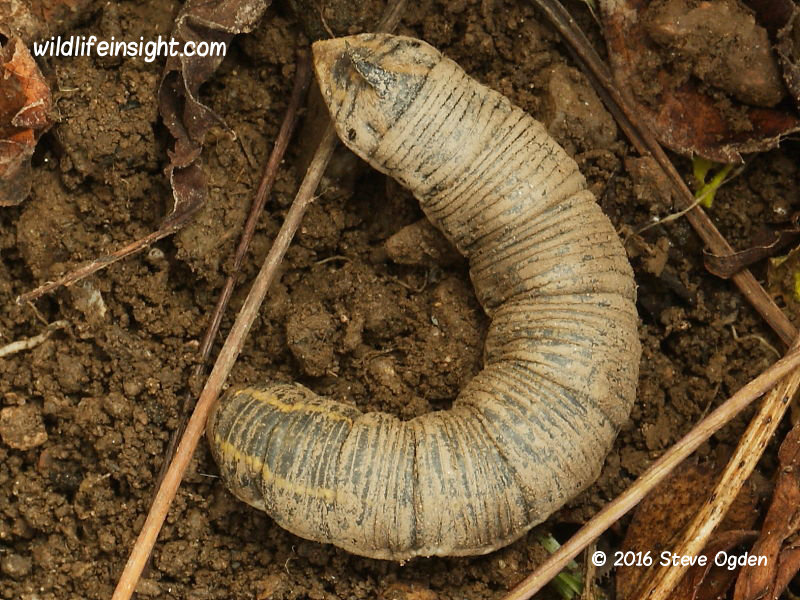
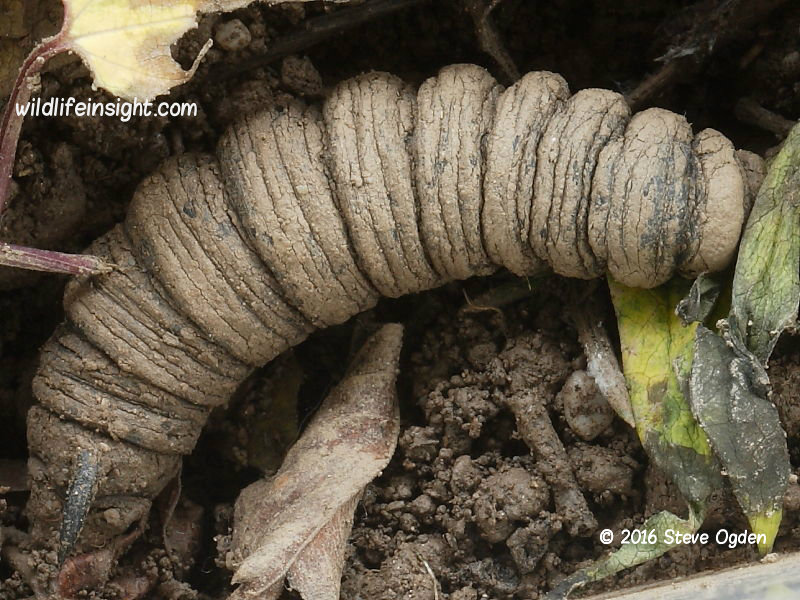
Convolvulus Hawkmoth, Agrius convolvuli, caterpillar sightings from the British Isles and Europe
The wide variation in colour of the caterpillars is well illustrated by those recorded by Troy Roberts in Almeria, Spain. The three shown below left were found on the same foodplant and likely to have been from the same brood.
In the UK the green forms shown were recorded from Perranporth, Cornwall ( Rose Williams), Norfolk (Marie Mimchella), Joey Cole in a cornfield near Weymouth and Noel Ashdown on Essex downland.
Dark forms shown were recorded from Cornwall (Paul Barron) and West Sussex (Peter Harvey).
Nelson Brites also recorded a dark form in Portugal. Other sightings were received from countries and islands around the Mediterranean including Italy, Greece, Portugal and Sardinia
Thanks go to all who sent in sightings and more will be added in due course.
Recommended moth and caterpillar reference books
